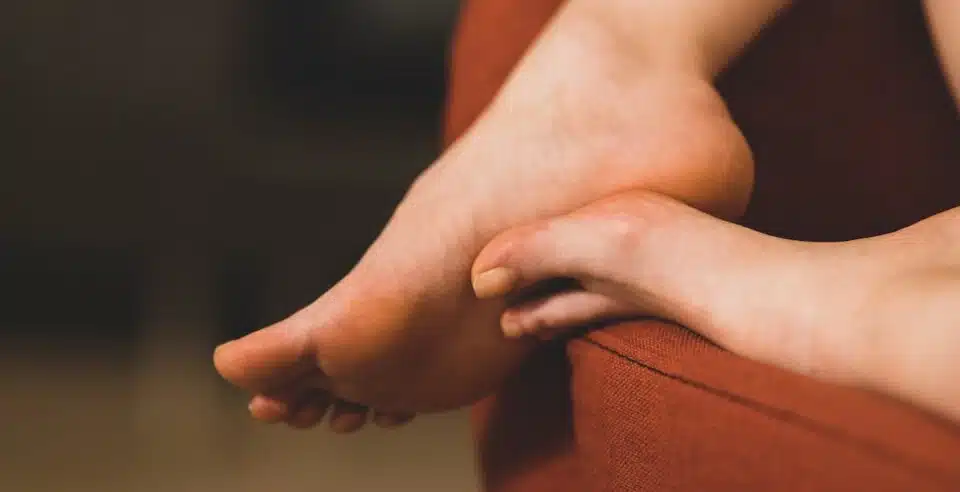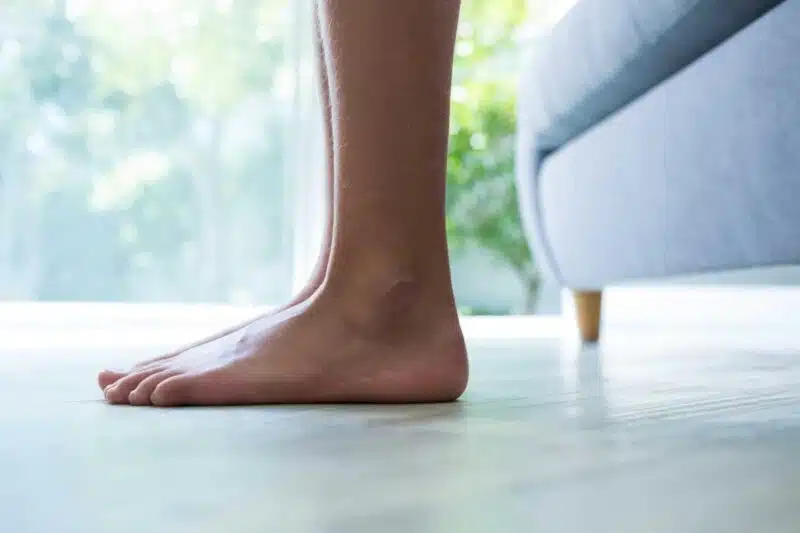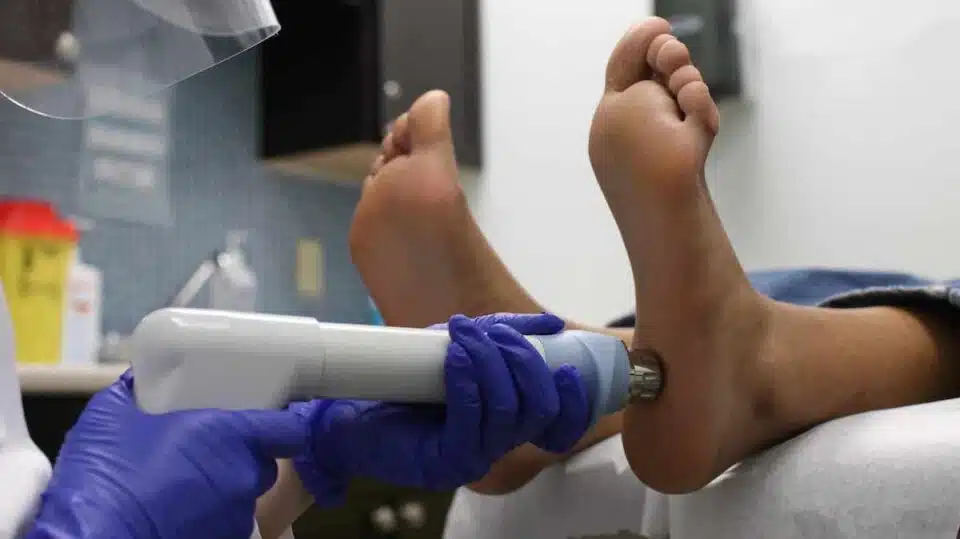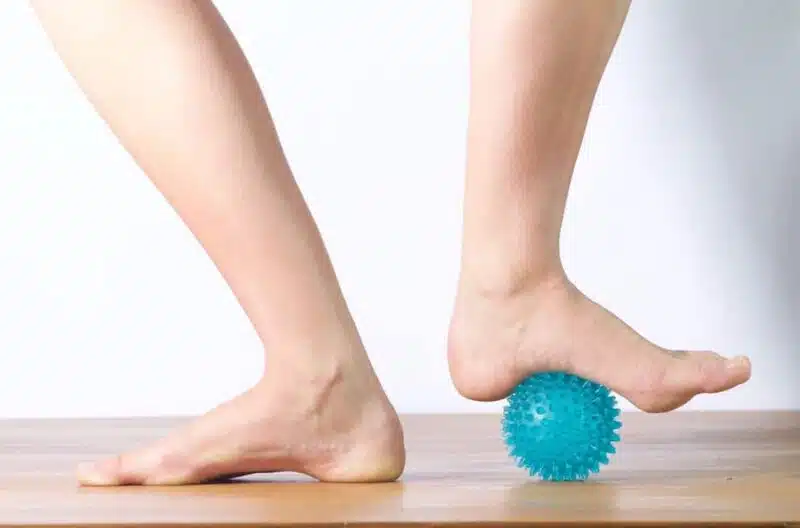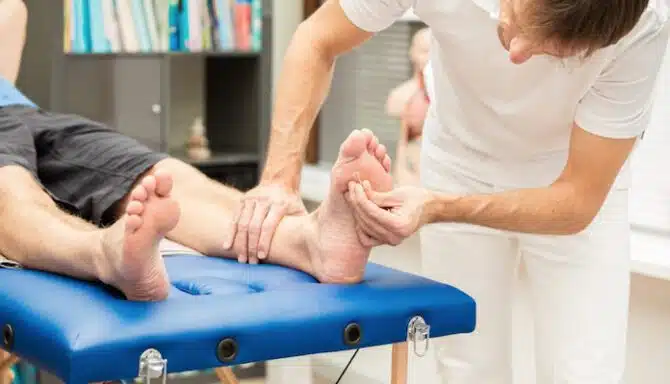Are you experiencing foot arch pain? You’re not alone.
The arches of our feet support our weight when we’re upright, providing a critical function for the body. Your arch also influences how you move, making it essential to keep them healthy and supported. But, sometimes, pain can creep up.
We’re here to help. This blog post outlines how foot arch pain develops and how to nip foot arch discomfort early to prevent long-term effects.
What is foot arch pain?
Foot arch pain can be a subtle or intense discomfort in the curved, raised area along the bottom of the foot (the arch). The arch is the midpoint of the foot between the ball and the heel of the foot. It comprises bones, ligaments, and tendons in the foot, which support the body’s weight and help absorb shock during walking and other activities.
A person’s arch is unique. The height and shape of the arch vary from person to person. Genetics, age, and the type of shoes a person wears all play a role in the arch’s shape. Foot arch pain is a common source of discomfort and may occur for various reasons. You may experience pain in different parts of the arch: the medial arch (inside edge), the lateral arch (outer edge), and the transverse arch (middle).
Next, we get into the causes of foot arch pain.
What causes foot arch pain?
Foot arch pain can be acute or chronic, typically stemming from inflammation. Pain can also range from a dull soreness to an intense sensation. Below, we outline the various causes of foot arch pain.
Overuse or repetitive stress
Foot arch pain can be simply the result of doing too much in too short a period. Repeated stress or overuse of the feet can lead to inflammation and pain in the arches. Overuse is especially prevalent in sports, with running, jumping, or even standing for long periods (like at work or if you stand at your desk while working from home).
Flat feet
Flat feet occur when the arch comes in complete contact with the ground due to weakened tendons and ligaments that can no longer hold up the arch. While flat feet may not always cause problems, individuals with fallen arches may require treatment such as supportive shoes or custom orthotics to alleviate symptoms and prevent further damage.
Plantar fasciitis
Plantar fasciitis affects the bottom of the foot and causes heel pain. This foot condition occurs when the band of tissue between your heel and toes becomes irritated. Plantar fasciitis can happen for various reasons, such as overuse, repetitive strain, or injury to the foot.
People who are overweight, have flat feet or high arches, or engage in activities that stress the feet, such as running or standing for long periods, are more likely to develop plantar fasciitis. You may experience pain and stiffness in the heel or arch of the foot, especially in the morning or after walking, running, or standing.
Arthritis
Arthritis describes conditions that cause inflammation and damage to the joints. Various forms of arthritis can lead to arch pain. Types of arthritis that cause arch pain include osteoarthritis, rheumatoid arthritis, and psoriatic arthritis.
Injury
You may experience foot arch pain because of past trauma or injury. Conditions like sprains, strains, or falls can cause arch pain due to acute muscle damage, ligament, and tendon damage.
Now that you know the various causes of arch pain, let’s get into treatment methods.
How can foot arch pain be treated?
Foot arch pain treatment can sometimes be frustrating due to our reliance on our arch. Staying off our feet to reduce stress on the arch can be challenging, but fortunately, there are several effective treatment options for foot arch pain. Depending on the intensity of the pain, you may choose a DIY treatment method. If your arch pain is persistent or severe, we recommend seeing a foot specialist to discuss treatment options and create a treatment plan.
Rest and ice
A mix of rest and ice is an effective treatment method for foot arch pain. First, temporarily reduce impactful activities and allow your feet to rest. Supplement rest with icing to keep swelling and inflammation down. (You can even use a frozen water bottle as an icy massage tool by rolling your feet on the bottle.) Then, when you feel like you’re on the upswing, ease slowly back into physical activity. Avoid returning to strenuous activity to allow your body to readjust from rest to being active.
Stretching
Stretching exercises can help improve flexibility and relieve tension in the arches. Here are a few effective stretching and strengthening exercises for arch pain:
- Place a towel on the floor, and grab the towel with your toes pulling it towards you.
- Grasp your toes (while seated), and scrunch them towards you to feel a stretch in your arch.
- Lean against a wall with your arms extended, and move your hips forward to stretch your calves.
Shockwave Therapy
This non-invasive innovative treatment delivers high-energy sound wave pulses to the affected area. Shockwave therapy triggers your body’s natural healing response to repair the damaged tissue in the arch area and reduce pain. Shockwave therapy is scientifically proven to be a highly effective treatment for chronic arch pain caused by plantar fasciitis. It is an excellent supplement to other treatments like orthotics and supportive footwear.
Orthotics
Custom-made orthotics can provide additional support and cushioning to the arches, which can help reduce pain and discomfort. Orthotics work to correct or accommodate biomechanical abnormalities, foot deformities, and other conditions to improve your gait and manage pain. The purpose of orthotics is to redistribute the force and pressure placed on our muscles and joints when we move. Equal distribution across your feet means fewer aches and pains as your muscles work better in tandem instead of select groups overworking.
Supportive footwear
Shoes with good arch support can alleviate arch pain, much like orthotics can. Wearing the proper footwear for your feet and the purpose is the least we can do for our feet. Supportive footwear acts to provide both the correct cushioning and
Physical therapy
Physical therapy can help improve strength, flexibility, and range of motion in the feet and ankles. Keeping your feet strong and balanced is vital to proper arch support. Over time, the tendons and ligaments of the arch tend to weaken. Physical therapy can help combat age and fallen arches.
Medications
You may supplement the above treatment methods with over-the-counter medication like ibuprofen or acetaminophen to reduce inflammation. Consult a doctor if you have intense pain or have questions about dosage or the recommended medication.
